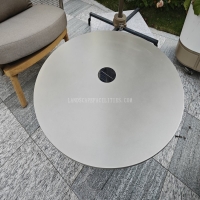Welcome to the website for landscape facilities products and knowledge.
How does the shape of the trash can influence waste compaction and capacity utilization?
The shape of a trash can plays a crucial role in determining how efficiently waste is compacted and how much capacity is utilized. A well-designed bin can significantly improve waste management by maximizing space and reducing the frequency of emptying.
1. Cylindrical vs. Rectangular Bins
Cylindrical trash cans often allow for better compaction due to their uniform pressure distribution. Waste settles evenly, minimizing air gaps. Rectangular bins, while space-efficient in corners, may lead to uneven compaction, leaving unused pockets of air.
2. Tapered Designs for Better Compaction
Tapered trash cans, narrower at the bottom and wider at the top, encourage waste to settle downward, naturally compacting it. This design is common in commercial bins to optimize capacity.
3. Flat vs. Rounded Bottoms
Flat-bottomed bins provide stability but may resist compaction as waste spreads outward. Rounded or concave bottoms help concentrate waste toward the center, improving compaction rates.
4. Lid and Opening Influence
A smaller opening can limit waste dispersion, forcing compaction, while larger openings may lead to loosely packed trash. Hinged or weighted lids can also apply gentle pressure to compress waste over time.
5. Material and Flexibility
Flexible or collapsible bins adapt to waste volume, aiding compaction. Rigid bins maintain shape but may require manual compression for optimal capacity use.
By selecting the right trash can shape, households and businesses can enhance waste compaction, reduce overflow, and improve overall efficiency in waste management.
Related search:

Recommendation
Outdoor stainless steel table with solar-powered ambient lighting feature - excellent design.